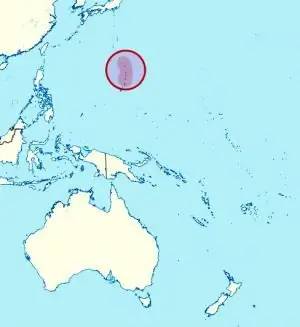- Author Harold Hamphrey [email protected].
- Public 2023-12-17 10:06.
- Last modified 2025-01-24 11:10.
The Ryukyu Islands, also known as Lyke or Nansei, stretch 1,200 km in the East China Sea from Kyushu to Taiwan, separating it from the open waters of the Pacific Ocean. The archipelago belongs to the Land of the Rising Sun, despite the fact that it is located at some distance from it, to the southeast of Japan.
At a Glance
The total area of the archipelago is 4700 square meters. km, and the last population census, conducted back in 2005, revealed more than 1.5 million people. However, of the nearly 100 islands that make up the Ryukyu, only half are habitable. Approximately 90% of the population lives on the largest of them called Okinawa. This is due to the fact that it is the capital and economic center of the Ryukyu - the city of Naha.

Mountainous terrain prevails on the larger islands, while plains and low coastal terraces are more common on the smaller islands. The Ryukyu Islands pose some danger to the population due to the large number of active volcanoes. This is especially true of the northern part of the archipelago, where the last major eruptionthundered in 1991.
Climate
The archipelago is located in the subtropical climate zone, but the monsoons also contribute to it. However, due to the remoteness of Nansei from the continent, the winter on the islands is very mild - there are no frosts and snow, and the thermometer in the coldest months does not fall below +13 oС.
In summer, the archipelago is hot (daytime above +30 oC), supported by high humidity. Only the sea wind helps to endure such weather.
August and September - the time of typhoons coming to the Ryukyu Islands (a photo of the archipelago is presented below), with no less frequency than to the main territory of Japan.

In the summer, tourists visiting the Land of the Rising Sun need to be especially careful, because hurricanes are its main scourge. Due to its proximity to the Pacific Ocean, in the tropical part of which northward cyclones often form, Japan is very often exposed to this natural disaster, and the Nansei archipelago is no exception. In addition, the Ryukyu are located in a seismic zone, which leads to frequent earthquakes.
History of the Ryukyu
The history of Nansei begins with the creation of the state of Ryukyu at the beginning of the 15th century. It was ruled by the Sho dynasty. By the end of the 15th century, the territory of possessions expanded until the entire southern part of the archipelago and islands off the coast of Kyushu was captured.
The state tried to maintain friendly relations with neighboring powers (ties with China were especially firmly established), oftenacting as a mediator in conflicts, thanks to which the Ryukyu Islands flourished until the 16th century. However, at the beginning of the XVII century. the cultural influence of Japan has increased, and conflicts with it have become more frequent.
This led to an attack on the islands, during which a representative of the Sho dynasty was captured, who later signed an agreement that the archipelago was a vassal of the Land of the Rising Sun. The state found itself in a double feudal dependence: on Japan and China, and each power considered Nansei to be its property.
The case was decided by the incident with Formosa, known in history as the Taiwan campaign. As a result of the peace agreement of 1874, the Ryukyu Islands (the list of exact names can be found in encyclopedias) were assigned to Japan, and in 1879 the territory of the state became officially considered the prefecture of Okinawa.
During the Second World War, the island of Okinawa became the territory of the battle between the Japanese and American armies, thanks to which the US military bases remained on the archipelago. To date, the attitude of the indigenous population of Ryukyu to this fact remains extremely ambiguous, as well as to the Japanese metropolis.

Moreover, after 1945, there was a movement for the independence of Okinawa, but by the 21st century it had greatly weakened, although a small percentage of the population still opposes ties with Japan and the United States.
Language and population
About 99% of the inhabitants of the Ryukyu Islands are a special people with a slightly different physical type than the Japanese. The inhabitants of the archipelago speak the languages of the Ryukyu group, but the usualadverbs are being phased out through schooling, where only Japanese is used.
Due to the remoteness of the islands, dialect reading is pronounced. In total, there are 4-5 Ryukyu languages (dialect), partially mutually understood by the inhabitants. In official situations, and by the population under 60, literary Japanese is used with a peculiar pronunciation, gradually replacing Ryukyuan.
A tourist visiting the Ryukyu Islands in Japan without a guide should be prepared for the fact that only the staff of various establishments intended for visiting foreigners speak English.

Attractions
The richest in attractions is Okinawa, the city of Naha, in which the temples of the same name and the royal palace of Shurijo are located. The island also has a lot of natural areas, historical and cultural reserves open to tourists.






